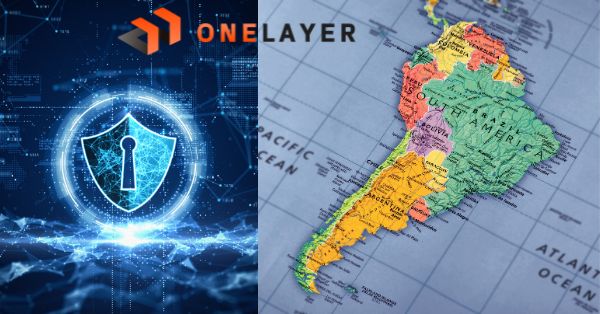NTT Com Asia enables smart city development in Hong Kong by launching the docomo 5G DX Square, a pioneering innovation lab designed to foster Private 5G (P5G), AI, and edge computing applications. As the first service provider to obtain the Localized Wireless Broadband System (Private) license from the Office of the Communications Authority (OFCA), NTT is laying the groundwork for Hong Kong’s future as a tech-driven smart city hub.
Addressing Hong Kong’s Smart City Challenges with Private 5G
Hong Kong, like many metropolitan areas, faces numerous challenges in developing smart city infrastructure. Public 5G networks, while impressive, often fail to meet the stringent demands for data speed, security, and connectivity required by emerging technologies like AI, edge computing, and IoT. Industries such as construction, healthcare, and transportation require ultra-low latency, high security, and scalable solutions, which public networks may not always provide. Additionally, there’s a need for flexible, cost-effective solutions that lower the total cost of ownership for enterprises.
NTT’s Private 5G Solution for Smart City Use Cases in Hong Kong
NTT Com Asia’s docomo 5G DX Square offers a dedicated Private 5G network solution tailored for smart city use cases. By deploying millimeter wave (mmWave) standalone technology, NTT provides enterprises with a high-performance, highly secure platform for developing and testing cutting-edge solutions. The P5G network supports vehicle-to-everything (V2X) communications, smart parking, and AI-powered applications. Its customizable and scalable architecture significantly reduces CAPEX and OPEX, making it as cost-efficient as Wi-Fi while delivering far superior performance.
This environment enables businesses, startups, and academic institutions to transform proofs of concept (POCs) into real-world applications in industries such as construction, healthcare, and transportation.
The Growth of Private 5G Networks and NTT’s Role in Innovation
The global market for Private 5G networks is booming. According to a report by Grand View Research, the market was valued at USD 2.69 billion in 2024 and is projected to grow at a compound annual growth rate (CAGR) of 54.1%, reaching USD 36 billion by 2030. NTT’s innovation lab capitalizes on this trend, creating an ecosystem for fast-tracking innovative solutions that require stable, high-speed, and secure connectivity.
Why NTT’s Private 5G Network is Ideal for Mission-Critical Applications
NTT’s choice to implement Private 5G networks was strategic. Unlike public 5G, which shares bandwidth with multiple users, P5G provides dedicated connectivity, ensuring ultra-low latency and enhanced security for mission-critical applications. This approach is vital for sectors such as healthcare and manufacturing, where data integrity and real-time response are non-negotiable.
Moreover, by adopting a multi-vendor strategy, NTT offers flexibility in solution development while reducing deployment costs. This flexibility also allows businesses to deploy customized IoT solutions quickly.
Key Benefits of NTT’s Private 5G for AI, V2X, and Edge Computing
The benefits of NTT’s Private 5G are vast:
- Faster data speeds: Essential for AI, AR/XR, and other data-heavy applications.
- Improved security: Critical for industries like healthcare and smart transportation.
- Low latency: Enabling real-time communication, perfect for applications such as V2X and remote surgeries.
- Cost efficiency: Comparable to Wi-Fi in terms of CAPEX and OPEX, making it accessible for businesses of all sizes.
By leveraging NTT’s infrastructure, enterprises can develop and test new solutions faster, cutting their time to market and gaining a competitive edge.
How NTT’s Private 5G Network is Transforming Hong Kong’s Key Industries
NTT’s P5G network is transforming key industries in Hong Kong. In transportation, V2X technologies powered by P5G are enhancing road safety and enabling smarter traffic management systems. In healthcare, P5G supports real-time AI diagnostics and remote surgeries that were once unthinkable. Construction firms use P5G for better site management, while manufacturing facilities leverage it for automation and IoT-enabled production lines.
NTT Com Asia’s Leadership in Driving Private 5G Innovation in Hong Kong
NTT Com Asia plays a crucial role in building this Private 5G ecosystem. Its launch of the docomo 5G DX Square demonstrates its commitment to driving Hong Kong’s digital transformation. NTT’s leadership in telecommunications is evident as it spearheads smart city projects, helping businesses leverage P5G, AI, and edge computing to create smarter, more efficient systems.
Collaborative Innovation: NTT’s Partnerships for Smart City Development
NTT collaborates with various partners, including local startups, enterprises, and academic institutions like the City University of Hong Kong. Through these partnerships, NTT provides access to cutting-edge technologies, commercial insights, and expertise. The ongoing collaboration between NTT and CityU on smart city solutions like AI-powered smart parking and V2X deployment highlights the effectiveness of these partnerships in driving innovation.
NTT’s Private 5G Network in Hong Kong: Current Status and Future Plans
As of August 2024, NTT’s Private 5G network is fully operational, supporting multiple proofs of concept and commercial deployments. The docomo 5G DX Square innovation lab continues to attract innovators who are developing real-world smart city applications.
The launch of the docomo 5G DX Square marks the beginning of a new phase in Hong Kong’s smart city journey. With ongoing projects in smart parking and V2X, NTT expects these solutions to reach commercial deployment by 2025. The continued expansion of P5G networks will further accelerate the development of smart city applications across various industries.
Expert Support for NTT’s Role in Hong Kong’s Smart City Development
Prominent figures in academia and industry endorse NTT’s initiative. Prof. Wang Jianping of CityU praises the company’s efforts, stating that NTT’s Private 5G is a core enabler of smart city solutions. He emphasizes that the unparalleled speed and reliability of P5G networks allow the development of mission-critical applications, turning Hong Kong into a leading smart city hub.

































